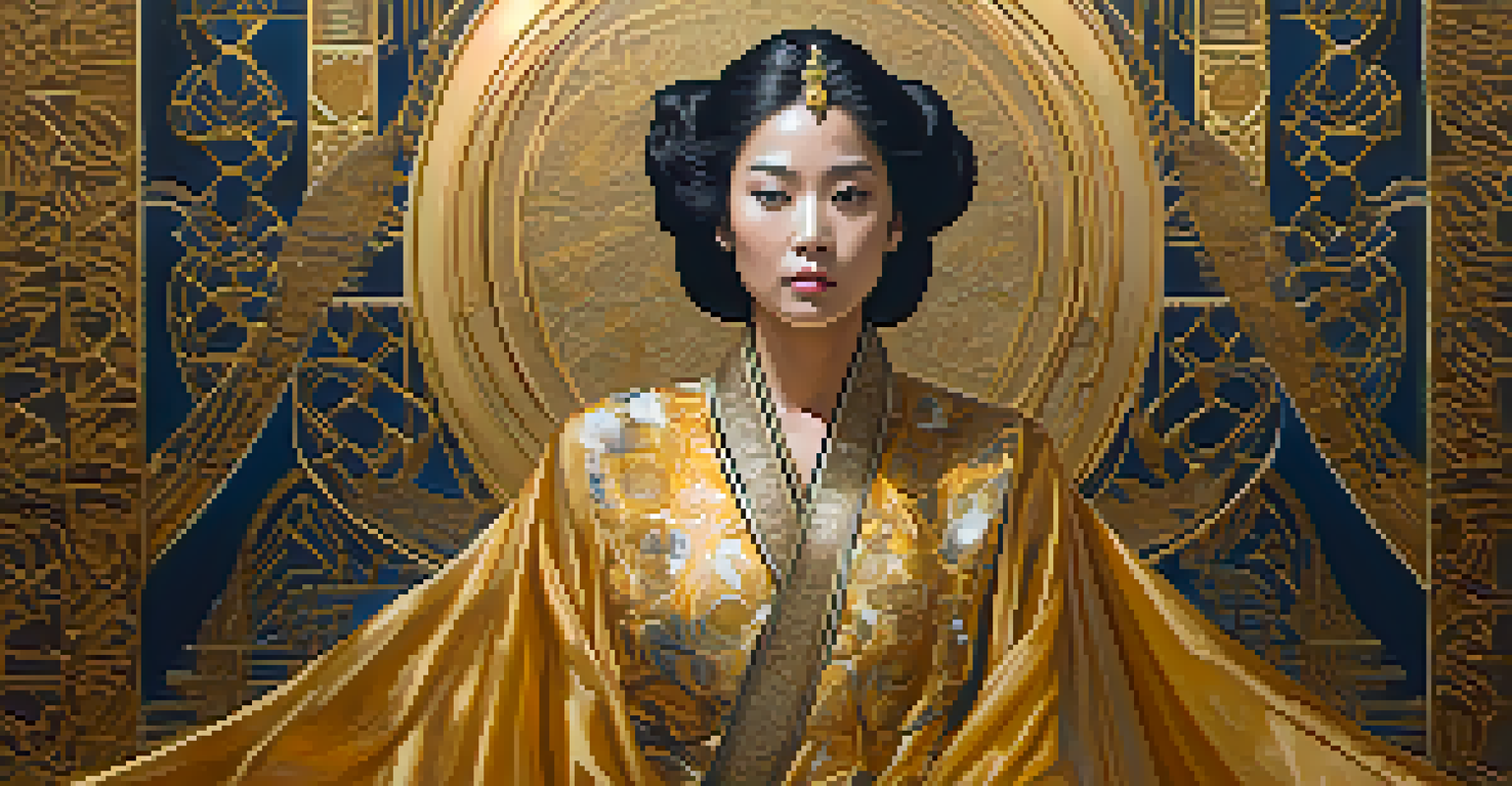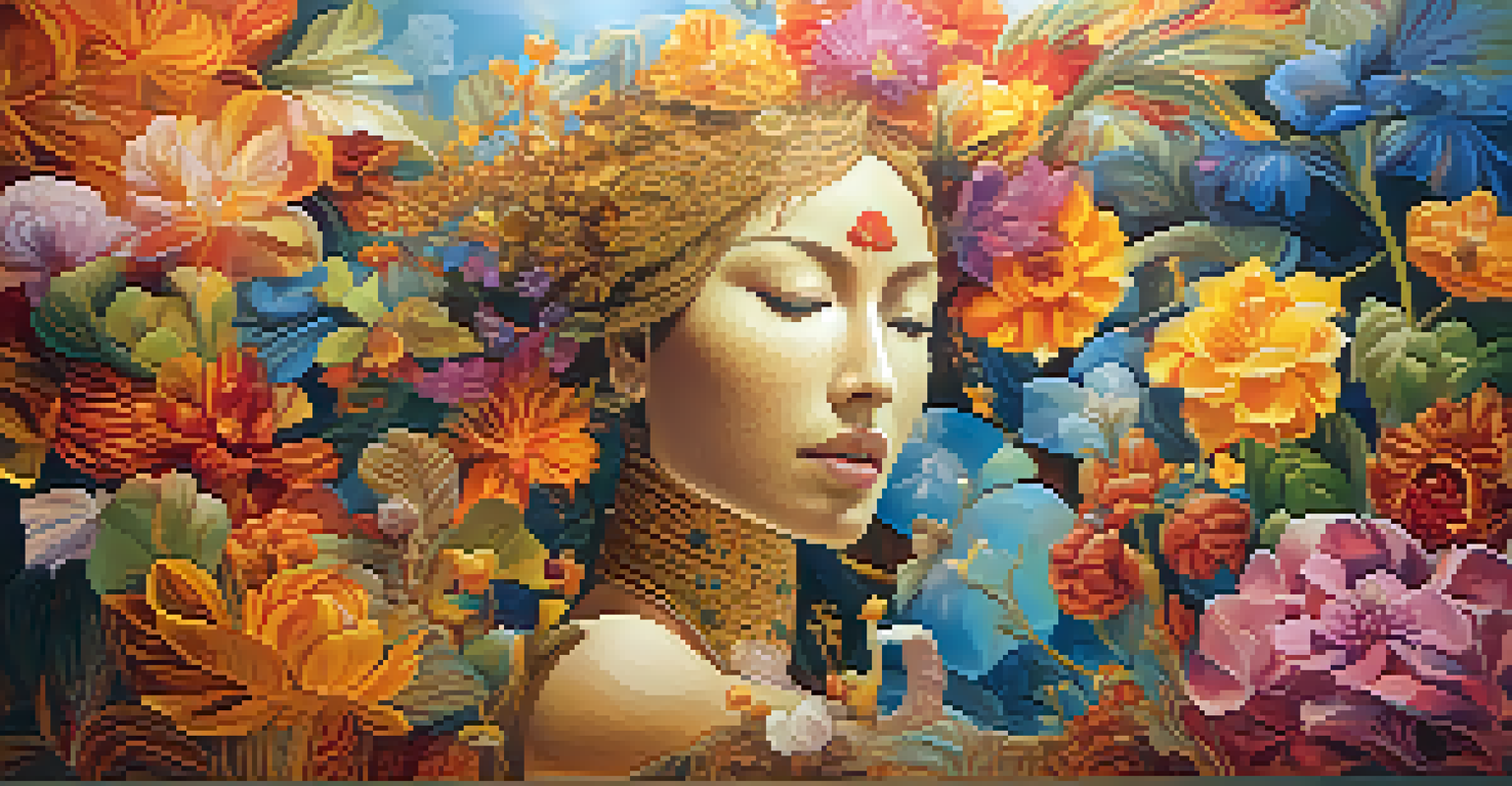The Symbolism of Gustav Klimt: Art Nouveau's Golden Master

Gustav Klimt: A Glimpse into His Life and Era
Gustav Klimt, born in 1862 in Vienna, became a pivotal figure in the Art Nouveau movement. His artistic career unfolded during a time when Vienna was a cultural hub, brimming with innovative ideas and artistic expression. Influenced by the city's rich heritage, Klimt's work reflects a blend of traditional and modern elements, making it both timeless and contemporary.
Art is a line around your thoughts.
Klimt's early works were primarily influenced by the academic styles of the time, but as he matured, he began to develop his unique voice. He was deeply influenced by Japanese art, Byzantine mosaics, and the Symbolist movement, which emphasized emotional and mystical themes. This eclectic mix laid the groundwork for his future masterpieces, where symbolism took center stage.
Understanding Klimt's background helps us appreciate the depth of his work. His life experiences and the cultural milieu of late 19th-century Vienna shaped his artistic vision, allowing him to forge a distinctive style that continues to resonate today. Klimt's journey is a testament to how personal and cultural influences can intertwine to create profound art.
The Use of Gold: A Signature Element in Klimt's Art
One of the most striking features of Klimt's work is his use of gold leaf, which adds a luxurious and ethereal quality to his paintings. This choice wasn't merely aesthetic; it symbolized wealth, divinity, and the transcendence of the human spirit. In pieces like 'The Kiss,' the gold envelops the figures, creating an aura of intimacy and otherworldliness.

The golden backgrounds also serve to blur the lines between the figures and their surroundings, emphasizing the unity between the subjects and their environment. This technique invites viewers to experience the painting as a whole, rather than focusing solely on individual elements. It’s as if the gold itself holds a narrative, enhancing the emotional resonance of the scenes.
Klimt's Unique Artistic Style
Gustav Klimt's art is characterized by a rich blend of traditional and modern elements, with a striking use of gold leaf that symbolizes wealth and spirituality.
Klimt's mastery of gold leaf transformed traditional painting into a multi-dimensional experience. By integrating this opulent material, he not only elevated the visual impact of his work but also deepened the symbolic meaning behind his subjects. The gold in Klimt's art is more than just decoration; it represents a bridge between the earthly and the divine.
Symbolism of Femininity: Women as Central Figures
Klimt's work often features women as central figures, embodying complex notions of femininity and sexuality. In paintings like 'Portrait of Adele Bloch-Bauer I,' women are portrayed not just as subjects but as powerful symbols of beauty and desire. Their representation speaks to both the allure and the enigma of the female experience, making them potent icons in Klimt's oeuvre.
The essence of beauty is the harmony of opposites.
Moreover, the women in Klimt's paintings frequently represent themes of life, death, and rebirth. For instance, in 'The Tree of Life,' the female figures are intertwined with the natural elements, symbolizing fertility and continuity. This connection to nature reinforces the idea that women are central to the cycles of life, grounding the ethereal qualities found in Klimt's art.
By exploring femininity through his unique lens, Klimt challenges societal norms of his time. His portrayal of women is multifaceted, allowing for interpretations that range from the erotic to the spiritual. This complexity has allowed Klimt's women to endure as some of the most recognized and discussed figures in art history.
Nature and the Natural World in Klimt's Symbolism
Nature plays a vital role in Klimt's art, often serving as a backdrop that enhances the emotional depth of his subjects. Floral motifs, trees, and landscapes are not just decorative but are steeped in meaning. For instance, the swirling patterns in 'The Tree of Life' symbolize the interconnectedness of all living things, emphasizing the harmony between humanity and nature.
Klimt's incorporation of natural elements also reflects the Symbolist movement's focus on the subconscious and the spiritual. By intertwining human figures with flora and fauna, he invites viewers to contemplate their own relationship with the natural world. This harmony suggests that our lives are inextricably linked to the cycles of nature, a theme that resonates deeply in today's environmental discussions.
Femininity and Symbolism
Women in Klimt's paintings are central figures that embody complex themes of femininity, sexuality, and the cyclical nature of life.
Ultimately, Klimt's portrayal of nature serves as a reminder of the beauty and fragility of life. His lush landscapes and intricate patterns evoke a sense of wonder, encouraging viewers to reflect on their own experiences with the natural world. In this way, Klimt's work transcends mere representation, offering a philosophical commentary on existence itself.
The Influence of Mythology and Spirituality in His Art
Klimt often drew inspiration from mythology and spirituality, weaving these themes into his artwork to create layers of meaning. His use of mythological figures, such as in 'Pallas Athena,' showcases not only artistic prowess but also a deep understanding of cultural narratives. These references invite viewers to explore the connections between art, history, and collective consciousness.
The incorporation of mythological elements also reflects Klimt's fascination with the idea of duality—life and death, love and loss. Such themes are pervasive in his work, encouraging viewers to contemplate the human condition. Klimt's art becomes a vehicle for exploring profound existential questions, allowing audiences to engage with their own beliefs and experiences.
Through his exploration of mythology and spirituality, Klimt's work transcends time and place. It invites us to reflect on our shared human experiences, bridging the gap between the past and the present. As a result, Klimt's art continues to resonate, offering insights into the timeless themes that define our existence.
Klimt's Legacy: Influence on Modern Art and Culture
Gustav Klimt's impact on modern art is undeniable, influencing many artists across various disciplines. His innovative use of color, texture, and symbolism has inspired countless movements, from expressionism to contemporary art. Artists often cite Klimt as a pivotal influence, highlighting how his work challenged conventional boundaries and encouraged experimentation.
Moreover, Klimt's exploration of themes like identity, sexuality, and the human experience resonates with modern audiences, making his work relevant today. His ability to convey complex emotions through visual language continues to captivate art lovers and critics alike. Klimt’s art serves as a reminder of the power of creativity to evoke thought and provoke dialogue.
Legacy in Modern Art
Klimt's innovative techniques and exploration of identity and emotion have influenced a wide array of modern artists and continue to resonate in contemporary culture.
Klimt's legacy extends beyond the canvas; it permeates popular culture, from fashion to design. His distinctive style and iconic imagery have been reinterpreted in various forms, showcasing the enduring appeal of his work. As we continue to engage with Klimt’s art, we are reminded of the lasting impact of creativity on our lives and culture.
Interpreting Klimt: Personal Reflections and Emotional Connections
Interpreting Klimt's work often involves a personal journey, as each viewer brings their own experiences and emotions to the canvas. The richness of his symbolism invites diverse interpretations, allowing for a deeply personal connection to the art. For many, Klimt's paintings evoke feelings of nostalgia, longing, or even joy, making each encounter unique.
This emotional resonance is what makes Klimt's art so compelling. Viewers may find themselves drawn to specific colors, patterns, or themes that resonate with their own life stories. In this way, Klimt's work becomes a mirror, reflecting our innermost thoughts and feelings, and prompting us to explore our own narratives.

Ultimately, engaging with Klimt's art is about more than just appreciation; it's an invitation to delve into our own emotional landscapes. By connecting with his symbolism, we can uncover deeper meanings that speak to our shared humanity. Klimt's genius lies not only in his artistic technique but also in his ability to touch the hearts of those who experience his work.